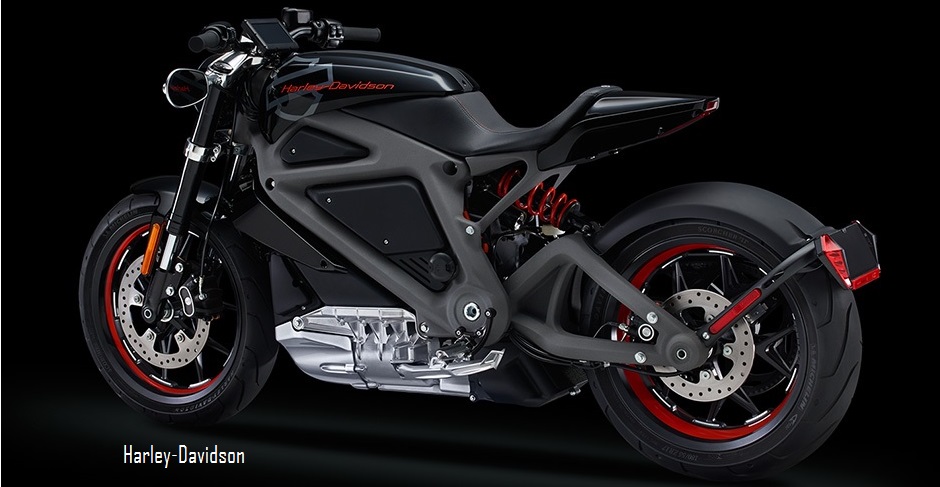In a radical departure from its usual, 112 year-old traditions, the world’s most famous bike manufacturer unveiled its prototype electric motorcycle, the ‘LiveWire’. After over a century of building motorcycles almost universally driven by a petrol-powered V-twin engine, the Milwaukee based firm decided to look to the future for what may become its next generation of product.
The machine itself is fairly normal looking, albeit sleek and modern, but a seasoned biker would recognise the wheel/frame/suspension/seat/tank arrangement easily enough. It was important to Harley-Davidson to design a bike that will appeal to its existing customers, as well attracting a more divers group of riders who may be seeking something more modern. Therefore the differences are mainly found where the engine should be.
The longitudinally mounted, three-phase AC motor sits low in the frame, its odd mounting position necessitating some clever engineering to connect with the drive line and rear wheel. Harley-Davidson’s project manager, Kirk Rasmussen, explained that not mounting the engine transversally meant they had to add a bevel gear in order to get the final drive facing in the right direction but, as luck would have it, the normally quite electric motor gained a turbine-like sound as a result of the extra gears. Rasmussen explained that this happy accident added to the feel of the bike, saying “Sound is part of the feedback riders get when riding… we’ve been getting very positive feedback about how it sounds.”
With 74 bhp and 52 ft lbs of torque, a limited top speed of 95 mph, and a 0-60 time of just under 4 seconds, the LiveWire isn’t going to be setting any lap records, but its performance is comparable with most modern Harleys. What is more important, as far as Rasmussen and Harley-Davidson are concerned, is the overall design of the bike.
According to Rasmussen, “A big box of batteries is not compelling, unless you are going for a modernist look,” so he surrounded the 7kWh battery pack with the frame, using the cast- aluminium container they are seated in as part of the frames structure. From an engineering point of view TFT dashboards, LED headlights and cast trellis frames are all very pretty, but it’s design solutions like this and the transposition of the engine that lift the LiveWire above the other electric bike prototypes out there.
And with the machine echoing lines from some classic Harleys from the past, as with a fuel tank – redundant obviously, it’s now the top cover to the batteries – that looks like the design found on a Sportster, but altered to remind the onlooker of an XR dirt racer, Harley-Davidson is doing its best to keep its brand recognisable. The only flies in the ointment are the current 60 mile range and the possible $50,000 price tag of the prototype.
Rasmussen says that right now, that’s about half as far as riders want to go, and twice as much as they may be willing to pay.

